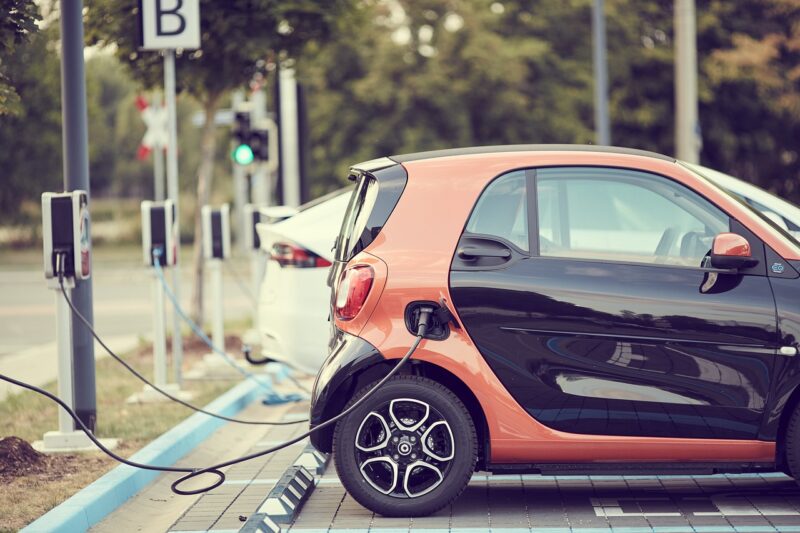How Electric Cars Really Impact the Environment (Beyond the Hype)
November 9, 2024

Electric cars (EVs) have been lauded as the future of sustainable transportation, often hailed as a solution to the environmental issues associated with traditional gasoline-powered vehicles. From reducing greenhouse gas emissions to minimizing air pollution, the benefits of electric vehicles sound enticing. However, as with any technology, the reality is more complex than it appears at first glance. In this article, we’ll dive deep into how electric cars truly impact the environment, offering a balanced perspective on both their benefits and drawbacks.
1. The Environmental Benefits of Electric Cars
Electric vehicles offer several environmental advantages over their combustion engine counterparts, primarily in terms of emissions and resource usage.
1.1 Reduced Greenhouse Gas Emissions
One of the most significant benefits of electric cars is their potential to reduce greenhouse gas (GHG) emissions. When operating, EVs produce zero tailpipe emissions, which contributes to cleaner air in urban areas. According to studies, electric cars can reduce carbon dioxide (CO2) emissions by up to 60% compared to traditional vehicles, particularly when powered by renewable energy sources.
However, it’s important to consider the source of electricity. In regions where coal or other fossil fuels make up a large part of the energy mix, the carbon footprint of EVs may not be as low as suggested. Nonetheless, as countries shift toward renewable energy, the overall environmental impact of electric cars will continue to decrease.
1.2 Decreased Air Pollution
EVs contribute significantly to reducing harmful air pollutants such as nitrogen oxides (NOx) and particulate matter. These pollutants are linked to respiratory illnesses and can negatively impact health, especially in densely populated areas. By using electric vehicles, cities can improve air quality, leading to better public health outcomes and fewer healthcare costs related to pollution-related illnesses.
1.3 Energy Efficiency
Electric vehicles are generally more energy-efficient than conventional vehicles. While internal combustion engines convert only about 20% of the energy from gasoline into movement, EVs can convert approximately 60% of electrical energy from the grid to power at the wheels. This difference means that electric cars can typically travel farther on the same amount of energy, ultimately leading to lower overall energy consumption.
2. The Hidden Environmental Costs of Electric Cars
Despite these benefits, concerns surrounding the environmental impact of electric cars cannot be overlooked. There are several hidden costs associated with their production, use, and disposal.
2.1 Battery Production and Materials
The production of lithium-ion batteries, which power most electric vehicles, has significant environmental implications. Extracting materials such as lithium, cobalt, and nickel can be resource-intensive and harmful to the environment. Mining operations often lead to habitat destruction, water scarcity, and pollution.
Additionally, the processing of these materials can result in the emission of greenhouse gases. As the demand for electric cars increases, so too does the need for sustainable battery production processes and responsible sourcing of raw materials.
2.2 Energy Source for Charging
While EVs emit zero tailpipe emissions, their environmental impact largely depends on how the electricity to charge them is generated. In regions reliant on coal or other fossil fuels, the life-cycle emissions of electric vehicles may not justify their perceived environmental benefits. Efforts must be made to ensure that charging infrastructure taps into renewable energy sources such as solar, wind, or hydroelectric power to truly capitalize on the environmental advantages of EVs.
2.3 End-of-Life Battery Disposal
Another critical factor is the disposal of used batteries. Current recycling methods are not efficient, and a percentage of batteries end up in landfills. This can lead to toxic material leakage, which poses an environmental risk. Developing comprehensive recycling programs and technologies to repurpose batteries will be essential for minimizing this impact.
3. Making Electric Cars More Sustainable
To maximize the environmental benefits of electric vehicles, several strategies need to be put in place, focusing on sustainability throughout the entire life cycle of the vehicle.
3.1 Advancing Battery Technology
Research into more sustainable battery technologies, such as solid-state batteries or alternatives to lithium, can reduce the ecological footprint of electric vehicles. Innovations in battery chemistry can lead to less resource-intensive manufacturing processes, improved recycling methods, and longer-lasting batteries.
3.2 Transitioning to Renewable Energy
Encouraging the adoption of renewable energy for charging infrastructure is crucial. Governments and utilities can promote this transition by providing incentives for renewable energy usage and investing in grid improvements that support renewable energy integration.
3.3 Implementing Comprehensive Recycling Systems
Establishing efficient recycling systems for electric vehicle batteries can mitigate the environmental impact associated with their end-of-life. Collaborating with manufacturers and recyclers to develop circular economy practices will help ensure that valuable resources are recaptured and reused.
Conclusion
Electric vehicles present both exciting opportunities and critical challenges in the quest for sustainable transportation. While they undoubtedly contribute to reducing greenhouse gas emissions and improving air quality, the hidden environmental costs must be carefully managed. By focusing on sustainable production and energy sources, advancing battery technology, and ensuring responsible recycling practices, we have the potential to make electric vehicles a truly green alternative. The transition towards electric mobility is essential, but it must be accompanied by a commitment to sustainability across all stages of the vehicle life cycle to realize its true environmental benefits. As consumers, policymakers, and industries, we must navigate the complexities of electric cars thoughtfully, striving for solutions that benefit people and the planet alike.







